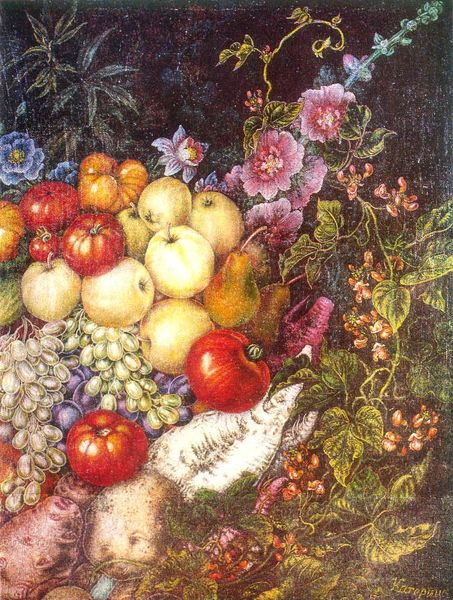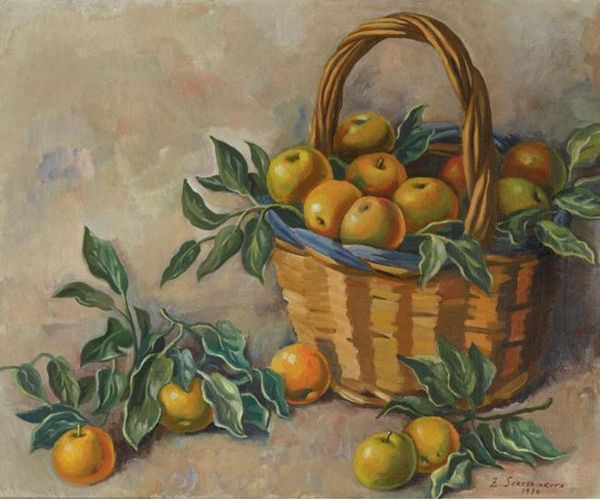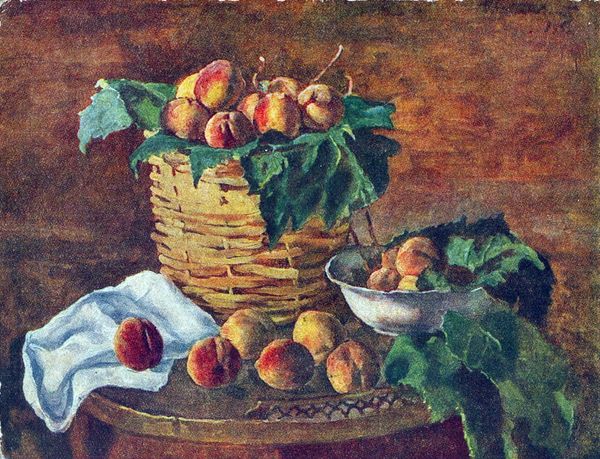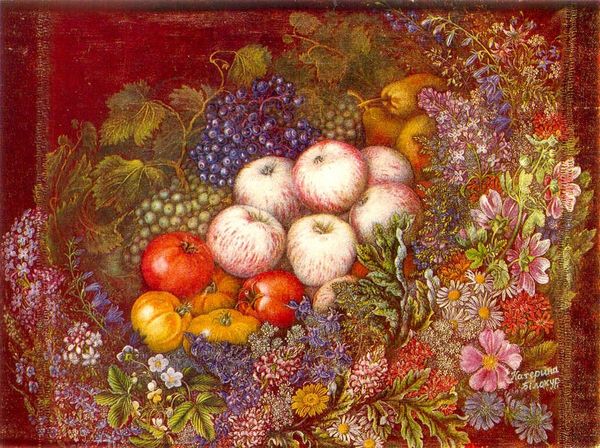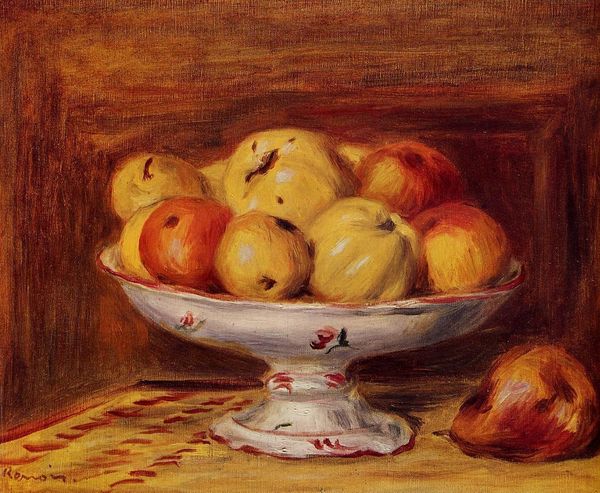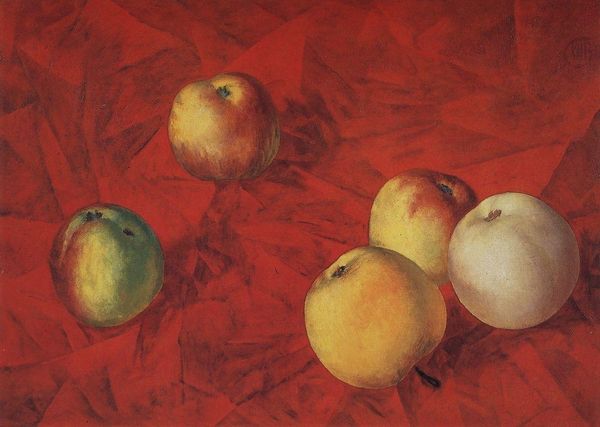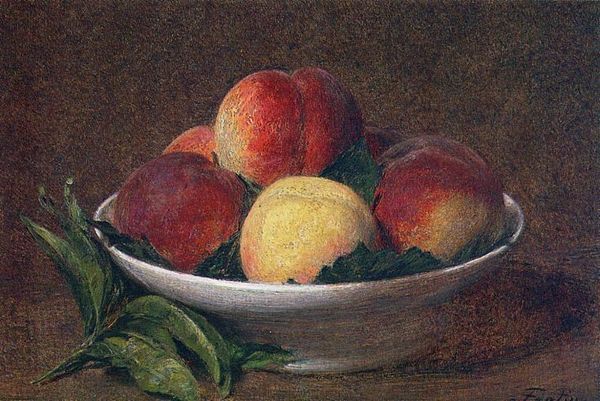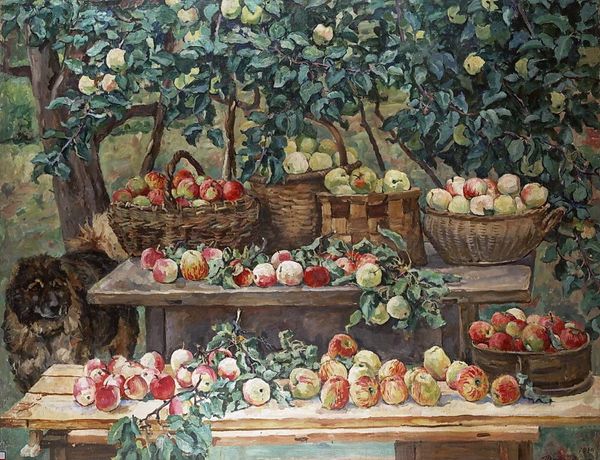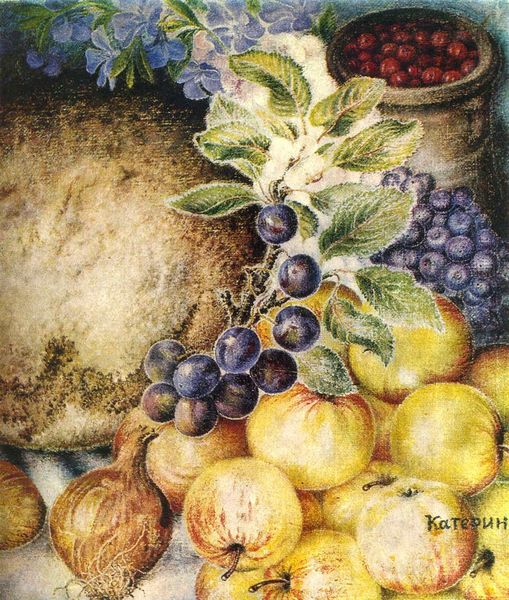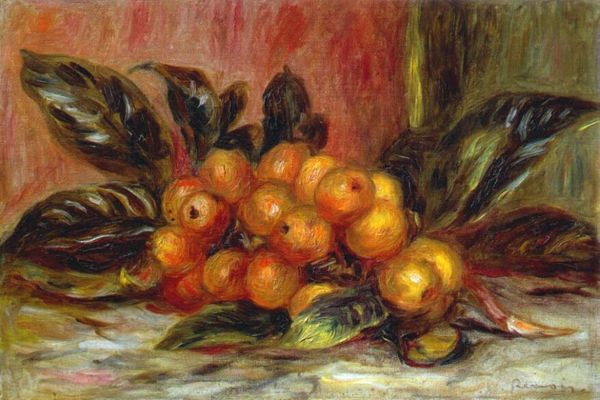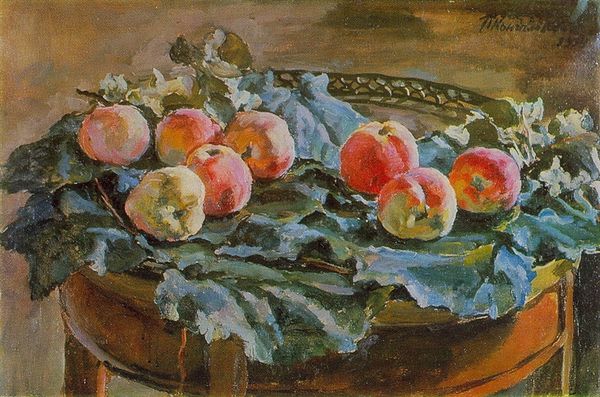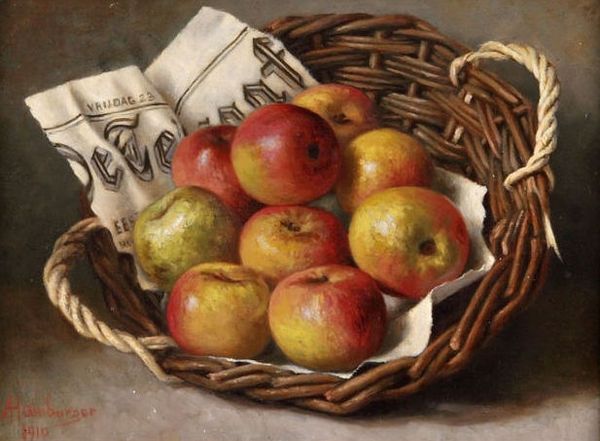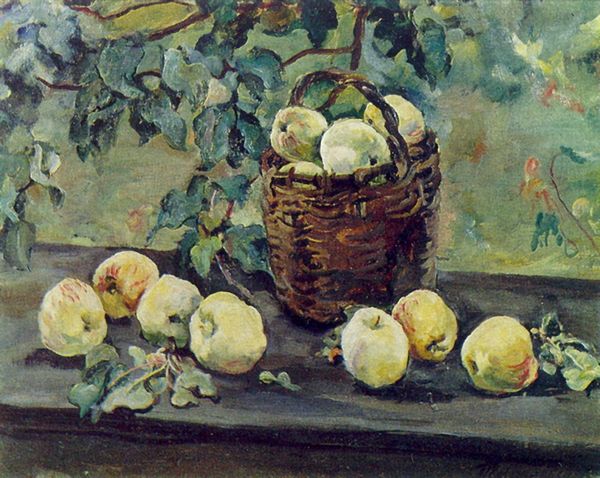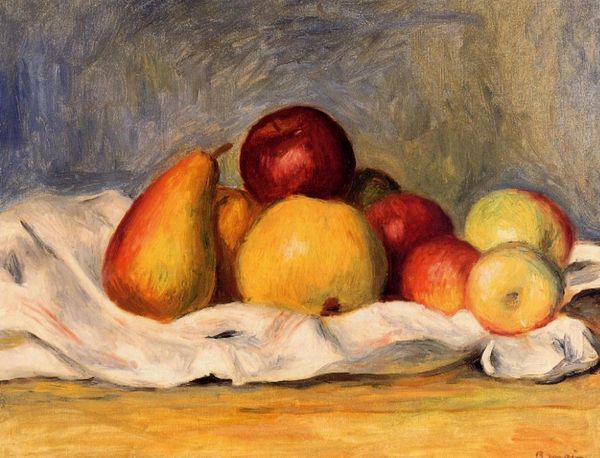
painting, plein-air, oil-paint
#
portrait
#
still-life
#
tree
#
table
#
still-life-photography
#
food
#
painting
#
plein-air
#
oil-paint
#
bird
#
oil painting
#
fruit
#
plant
Copyright: Kateryna Bilokur,Fair Use
Curator: Here we have Kateryna Bilokur's "Apples of Bogdanivka," an oil painting from 1959. Editor: It feels immediately welcoming. The light is soft, the colors are vibrant yet muted... almost nostalgic. The composition, overflowing with apples, hints at abundance. Curator: Bilokur was a self-taught Ukrainian folk artist. She worked in relative isolation in her village. Her work wasn't widely recognized until much later in her life, particularly in the West. It’s fascinating to consider how the social and political environment of the Soviet Union shaped the accessibility of her art. Editor: Absolutely. And knowing she was self-taught underscores the painting's powerful, raw honesty. I’m struck by the apples themselves – ordinary, but rendered with such meticulous care they become almost portraits. This evokes questions of identity and place through the lens of the most familiar subjects. How were women like her historically excluded from art? How does that inform her approach and how we should understand the politics embedded here? Curator: Exactly. It prompts us to question those historical blind spots within art historical canons, particularly regarding folk art and self-taught artists from Eastern Europe. Still life was often regarded as low on the hierarchy, even looked down on in favor of historical and religious painting by the academics of the time. Editor: Precisely. There’s a subversion inherent in taking a humble subject, a domestic scene even, and treating it with such reverence. We’ve also got a couple of little birds amidst flowering branches to add to that feeling of vitality! These compositional decisions invite a reassessment of what constitutes 'high art' in broader social terms, like a feminist reading into who dictates this hierarchy and on what criteria. Curator: Absolutely, that element of reverence and focus on domesticity flies in the face of so many art historical conventions. Editor: Considering that history, one sees the piece is infused with resilience. Bilokur reclaims value through the careful art of seeing, doing, and feeling. Curator: The legacy of Bilokur forces us to continue questioning how and why art is valued, celebrated, and archived. Editor: It truly makes you ponder the untold stories embedded in seemingly simple paintings. Let us hope in future, institutions make space and resources for this!
Comments
No comments
Be the first to comment and join the conversation on the ultimate creative platform.
